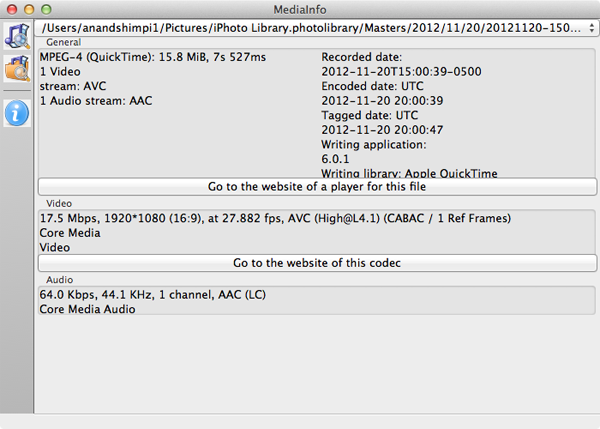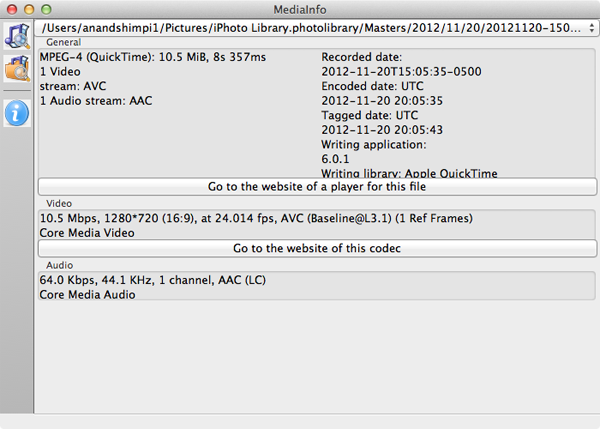iPad 4 (Late 2012) Review
by Anand Lal Shimpi on December 6, 2012 4:40 PM ESTCamera
The iPad 4 features a 5MP rear facing iSight camera and a 1.2MP front facing FaceTime HD camera. The rear camera shoots photos at 2592 x 1936, while the front facing camera shoots photos at 1280 x 960. The aperture and focal length of the rear facing camera haven't changed compared to the 3rd generation iPad.
| Rear Facing Camera Comparison | |||||||
| Sensor | Resolution | Compressed JPEG Size | Aperture | Focal Length | |||
| Apple iPad 4 | 5MP | 2592 x 1936 | 3.4MB | f/2.4 | 4.3mm | ||
| Apple iPad 3 | 5MP | 2592 x 1936 | 3.1MB | f/2.4 | 4.3mm | ||
| Apple iPad 2,4 | 0.7MP | 960 x 720 | 344KB | f/2.4 | 2.0mm | ||
| Apple iPad mini | 5MP | 2592 x 1936 | 3.1MB | f/2.4 | 3.3mm | ||
| Apple iPhone 5 | 8MP | 3264 x 2448 | 3.1MB | f/2.4 | 4.1mm | ||
| Apple iPod Touch 5 | 5MP | 2592 x 1936 | 3.1MB | f/2.4 | 3.3mm | ||
Still image quality out of the rear camera is comparable to the 3rd generation iPad, and clearly better than the iPad mini.

The front facing camera sees the biggest improvement over the iPad 3. The difference is like night and day thanks to the increase in sensor quality and resolution.

| Front Facing Camera Comparison | |||||||
| Sensor | Resolution | Compressed JPEG Size | Aperture | Focal Length | |||
| Apple iPad 4 | 1.2MP | 1280 x 960 | 426KB | f/2.4 | 2.2mm | ||
| Apple iPad 3 | 0.3MP | 640 x 480 | 117KB | f/2.4 | 1.8mm | ||
| Apple iPad 2,4 | 0.3MP | 640 x 480 | 105KB | f/2.4 | 1.8mm | ||
| Apple iPad mini | 1.2MP | 1280 x 960 | 372KB | f/2.4 | 2.2mm | ||
| Apple iPhone 5 | 1.2MP | 1280 x 960 | 400KB | f/2.4 | 2.2mm | ||
| Apple iPod Touch 5 | 1.2MP | 1280 x 960 | 406KB | f/2.4 | 2.2mm | ||
Video
The iPad 4 shoots 1080p video from its rear camera and 720p on the front. Video shot with the rear camera is encoded using H.264 (High Profile) at an average bitrate north of 17Mbps. This puts the encode parameters similar to those of the iPhone 5 and iPad mini. The same is true for the front facing camera.

The front facing camera shoots baseline video at roughly 10.5Mbps:

Video quality is pretty good as well:
WiFi Performance
Like the iPad mini and iPhone 5, the iPad 4 uses Broadcom's BCM4334 WiFi controller. The 4334 supports dual-band 802.11n as well as fallback to 802.11b/g. On 5GHz Apple continues to support 40MHz channels for a maximum PHY rate of 150Mbps. Performance and reception both remain solid:


















113 Comments
View All Comments
darkcrayon - Friday, December 7, 2012 - link
"Can you run full OS VMs in iOS? "Well iOS is perfectly capable of running emulators if that's what you mean. I start up Windows 3.1 on mine every once in a while for a laugh ;)
If you mean run at some metal-level virtualization then no, but then that wouldn't really be running on Android so much as on the hardware of the device.
antef - Friday, December 7, 2012 - link
If you think Android is just as appliance-like as iOS then I feel there are major things about the platform that you are uninformed about. Not saying that in a demeaning way, just saying perhaps you never discovered these aspects of the system.iOS cannot be considered a true "computing platform" when you can only get apps via the App Store, they can only do what Apple approves of, and they can't truly run in the background, instead being able to only do certain things when not in the foreground. It's a large set of restrictions limiting what can be done with the device, thus it's an appliance, regardless of what functionality apps may or may not provide. It's no different from a set-top box or any other CE device, except it offers way more apps.
Android, on the other hand, even without rooting or messing with custom ROMs, lets you install any app, from any source, that does anything the developer wishes it to do. You don't have to use any app store or pay Google any fees if you don't want to. Apps can touch almost any part of the system or replace any part of the system. Apps can do absolutely anything in the background with almost no restriction. You can browse and manage files like on a PC. The list goes on and on.
Same thing regarding customization. Without rooting Android, you can change its keyboard, default browser, default mail handler, and the entirely of its home screen (icons, dock, app drawer, all can be replaced with alternate launcher).
Android has very few restrictions above and beyond what a typical desktop platform like Windows has. It's essentially Linux with a special app container format and custom UI, that ships without su by default. Yeah, maybe the typical user just using web, texting, and Facebook will think both platforms are equally appliance-like, but that doesn't change the fact of what Android can do. I believe Anand's analysis is spot on.
darkcrayon - Friday, December 7, 2012 - link
It seems Android can only do "certain things" in the background as well. Or maybe you can tell me how to play youtube audio from the browser while Chrome is suspended (You can do this in Safari on iOS).iOS is a true computing platform - it's your definition of "computing" that is the problem. You *can* enter code and run software on it that did not originate on the App Store (not that if you couldn't, it would somehow cease to be a "computing platform".)
It's certainly easier to do more "mucking around" with Android - iOS just has a more security oriented approach while Android has more versatility. Of course for 99% of users for either platform, none of that matters in the slightest as they buy the device to browse the web, play media, and find useful software to run.
Velius - Monday, December 10, 2012 - link
First, I have to thank everyone who responded to my original post. I was shaking my head afterward submitting my post since the way it was originally written was definitely flamebait. Kudos for being respectful and *helpful* in your responses, when I most certainly deserved an ass-kicking.These are all good points (especially antef with respect to my original points) and well expressed. You are right, there are more things that can be customized in Android, but I think you can do it in iOS too - just have to jailbreak it first. The difference, IMO, is that with Android, you *have* to replace most of the defaults because the defaults are really not good. When I used my SGS3, the default keyboard was horrendously slow. SwiftKey 3 rectified that to a large extent, but was a paid app. Why should I have to pay to have a usable keyboard?
Same with the music player - I disagree, first of all, that Poweramp is better than the iOS music player. I found Poweramp to be underwhelming, with player buttons and icons that look like really badly designed bitmaps. Along these lines, any music player on Android lacks the fine-grained seek capabilities that iOS has (which is called "scrubbing" there). I really missed the ability to seek with greater or lesser granularity, going down to the second. You can't do that in Android - the seeks are all giant leaps. Similar story with volume control. There are only 15 settings on the SGS3 (and I assume Android in general). Most of the time, the music I would listen to would be ideally loud between, say, 12 and 13, but I could never set it to that. If I set the volume to 12, it would be too soft, and if I set it to 13, too loud. In iOS, there is very fine control over volume. And let's not even get to transitions between tracks. There is always a gap in the default SGS3 music player between tracks - this would perhaps have been understandable in 1995, but is completely unacceptable today!
These little things add up substantially - the list goes on and on - making iOS just more polished. Even the basic OS responsiveness is a deal-breaker. On my SGS3, if I reboot the phone and go to type something up, say in a text message, it takes about 10 seconds before it even registers my keyboard presses. This is mind-boggling, and I truly wonder how many people on online forums say Android is "faster" - it is not, at least definitely not with the OS interface. I really do believe that people who claim Android is faster just haven't used iOS. Once you do, you just can't go back. :3
Getting back to the original topic, I also don't fully agree that iOS is an appliance. The reason Apple vets software before allowing it to go on the App Store is mostly for quality control. Just search Google for "android apps insecure", and read pages with titles like, "Research says Android users at high risk of installing insecure apps", "Researchers find 1,000 insecure Android apps", and "One in five Android apps is insecure". Yes, you can sideload apps onto your Android phone, but it's a double-edged sword: the Android software ecosystem is a true wild west, with all the attendant issues: buggy or plain crappy software, crashes, malware, insecure apps, etc. I'm not saying Apple's App Store is immune to this, but it's definitely far less prone to it.
In all, I stand by my original claim: "iOS is an appliance, Android is a true computing experience" is a completely bogus and harmful meme. Why harmful? Because millions of people are buying Android phones in the belief that it's better than iOS, when it just isn't. They are thus robbing themselves of a truly polished, wonderfully designed mobile hardware+software computing platform (iOS on iPhone) that is still the top in its class.
Peace.
Velius - Monday, December 10, 2012 - link
Just to clarify, the point I made about Android's responsiveness - and examples I gave from my experience - were all based on Jelly Bean 4.1 stock ROM from Samsung. The "project butter" benefits were only really seen when scrolling between pages (and even then, it got choppy as the SGS3 was loading some widgets). Otherwise, when you open a browser or basically any app, and try to scroll, it is noticeably less smooth. It's like it only scrolls in jumps of 20 pixels at a time. Reducing animation times and forcing GPU rendering in the options alleviated this somewhat, but not entirely.Again, it boggles the mind how such a powerful device (from the hardware standpoint) can be so slow in its user interface - arguably the most important factor in usability!
DeciusStrabo - Friday, December 7, 2012 - link
for its power, the App selection, the looks, the lightning connector (yes, except the price it's really a great connector), Airplay etc.However, I don't like it nearly as much holding it in my hands than my Nexus 10. It's cold, slippery, heavy. You can't really hold it in one hand easily and if you use your body to prop it up if you lie on your couch the edge tends to get really uncomfortable (less than with the iPad 2 but still far too much). As nice as the aluminium looks I prefer the cheaper looking coated plastic of the Nexus 10. Also, speakers on the front > speakers on the back, usually where you tend to hold the thing, even if the one on the iPad is better than the two on the Nexus soundwise.
maximumGPU - Friday, December 7, 2012 - link
what's more concerning is how exactly do you have use for 2 same sized tablets?!eallan - Friday, December 7, 2012 - link
Sometimes we like to waste money on toys!seapeople - Friday, December 7, 2012 - link
2 people = use for 2 tablets? Perhaps the guy is married? Otherwise, I agree, he's insane. It would be like the most colossal waste of money on the planet to buy multiple tablets within a five year period. I mean, that's like half a thousand dollars... for each! Only a very select few fat cats in our society make thousands of dollars that they can just spend on stuff.mavere - Saturday, December 8, 2012 - link
I honestly can't decide whether the latter half of your post is sarcasm.